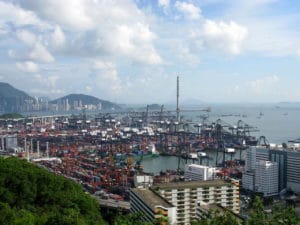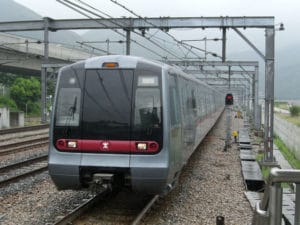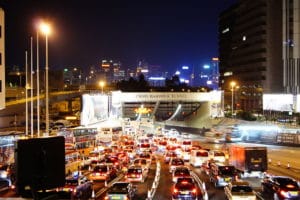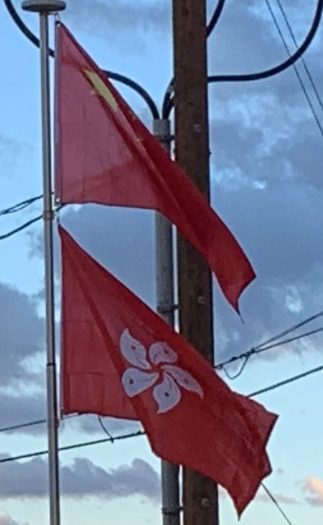
As the mainland liberalized its economy, Hong Kong’s shipping industry faced intense competition from other Chinese ports. Fifty per cent of China’s trade goods were routed through Hong Kong in 1997, dropping to about 13 per cent by 2015. The territory’s minimal taxation, common law system, and civil service attract overseas corporations wishing to establish a presence in Asia. The city has the second-highest number of corporate headquarters in the Asia-Pacific region. Hong Kong is a gateway for foreign direct investment in China, giving investors open access to mainland Chinese markets through direct links with the Shanghai and Shenzhen stock exchanges. The territory was the first market outside mainland China for renminbi-denominated bonds, and is one of the largest hubs for offshore renminbi trading.
Tourism is a major part of the economy, accounting for five per cent of GDP. In 2016, 26.6 million visitors contributed HK$258 billion (US$32.9 billion) to the territory, making Hong Kong the 14th most popular destination for international tourists. It is the most popular Chinese city for tourists, receiving over 70 per cent more visitors than its closest competitor (Macau). The city is ranked as one of the most expensive cities for expatriates.
Transportation:
Hong Kong has a highly developed, sophisticated transport network. Over 90 per cent of daily trips are made on public transport, the highest percentage in the world. The Octopus card, a contactless smart payment card, is widely accepted on railways, buses and ferries, and can be used for payment in most retail stores.
The Mass Transit Railway (MTR) is an extensive passenger rail network, connecting 93 metro stations throughout the territory. With a daily ridership of over five million, the system serves 41 per cent of all public transit passengers in the city and has an on-time rate of 99.9 per cent. Cross-boundary train service to Shenzhen is offered by the East Rail line, and longer-distance inter-city trains to Guangzhou, Shanghai, and Beijing are operated from Hung Hom Station. Connecting service to the national high-speed rail system is provided at West Kowloon railway station.

Although public transport systems handle most passenger traffic, there are over 500,000 private vehicles registered in Hong Kong. Automobiles drive on the left (unlike in mainland China), due to historical influence of the British Empire. Vehicle traffic is extremely congested in urban areas, exacerbated by limited space to expand roads and an increasing number of vehicles. More than 18,000 taxicabs, easily identifiable by their bright color, are licensed to carry riders in the territory. Bus services operate more than 700 routes across the territory, with smaller public light buses (also known as minibuses) serving areas standard buses do not reach as frequently or directly. Highways, organised with the Hong Kong Strategic Route and Exit Number System, connect all major areas of the territory. The Hong Kong–Zhuhai–Macau Bridge provides a direct route to the western side of the Pearl River estuary.

